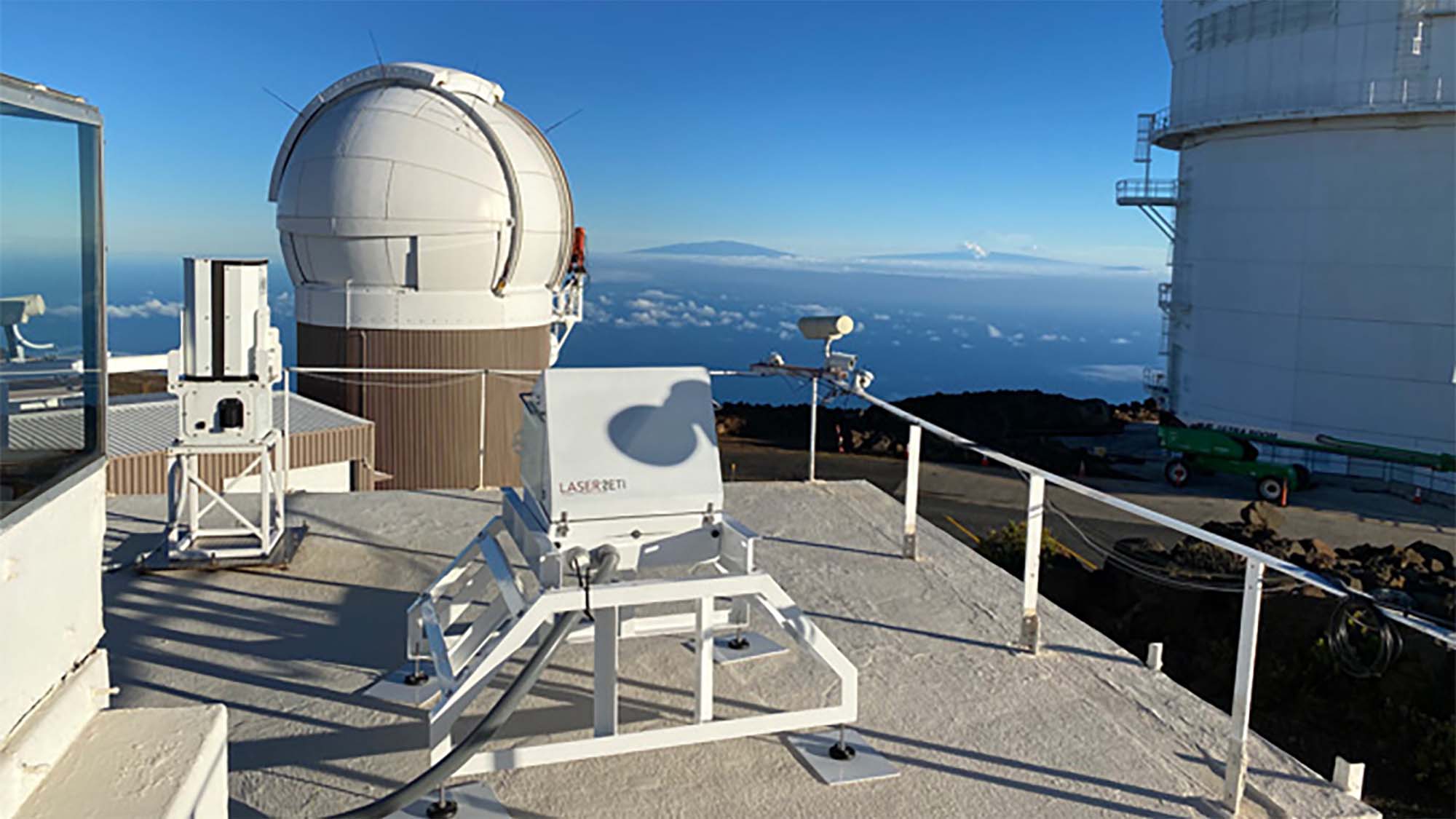Alien civilizations might be using lasers to communicate across vast distances, and now we might be able to finally hear what they have to say.
LaserSETI, as it is known, scans the night sky for pulses of visible light that can be used to communicate vast amounts of information, typically half a million times as many bits as radio transmissions.
Operated by the SETI Institute, the new system will hopefully bring us closer than ever to making contact with alien civilizations – assuming they’re out there, of course.
New optical detection equipment has just been installed on the roofs of existing building on Hawai’i’s Mount Haleakalā, according to the University of Hawai’i. This will allow SETI researchers to monitor a larger area of sky than ever before, looking for nanosecond-long pulses of light that could be encoding messages from extraterrestrial life.
“The possibility that life exists elsewhere is exciting for the public, especially with the reports of biologically interesting molecules in the atmosphere of Venus, the selection of two Venus missions by NASA, the Mars Perseverance rover mission, and the upcoming Europa Clipper mission to explore Jupiter’s moon,” said University of Hawai’i Institute for Astronomy professor Karen Meech.
“[University of Hawai’i] has had a long involvement in astrobiology to explore the possibility of life elsewhere—both through research related to formation of habitable worlds, discovery of exoplanets, and the development of new innovative mirror and telescope technology to detect planets. It is exciting to add a new direction to this investigation by searching for technological signatures.”
Analysis: how LaserSETI works

The optical sensors just installed in Hawai’i will work with two existing sensors in Sonoma, California, at the Robert Ferguson Observatory to monitor the skies over the Pacific Ocean.
The way each device works is by using two cameras rotated at 90 degrees relative to each other along a viewing axis. The cameras use a transmission grating to split light sources into spectra, then read the camera out at a rate of more than 1,000 times a second.
The two cameras in the optical sensor is able to scan approximately 75 degrees of the night sky, and while the light of stars will produce a characteristic spectra of light, so too will laser pulses, which would be easily identifiable.
By using camera systems in California and Hawai’i, researchers can cover the same patch of sky from different angles, which will be able to filter out light signals that might originate from satellites or passing aircraft, both of which use laser pulses for navigation and communication. This ensures that any laser pulse signals they detect will be attributable to a source outside our solar system.
“LaserSETI is attempting a big step forward in searching for technosignatures, that is, evidence of life originating beyond Earth,” said the principal investigator for LaserSETI, Eliot Gillum. “It’s the first project in either optical or radio astronomy designed to cover the entire sky.”
This system also helps keep costs low, so that covering the entire night sky in every hemisphere is expected to cost just $5 million, a relatively small sum as far as projects of this scope go.
Currently, there are 10 additional systems being installed at sites in Puerto Rico, the Canary Islands, and Chile, which will be enough to cover the night sky for the entire western hemisphere.

















